135 East 79th Street: Review and Ratings
between Park Avenue & Lexington Avenue View Full Building Profile
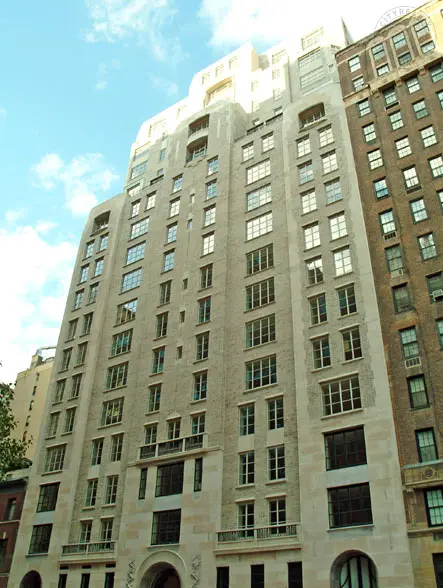

The second best pre-war apartment building in the city in the post-war period is this limestone-clad, 19-story, mid-block building at 135 East 79th Street between Park and Lexington Avenues.
The building was erected in 2013 and has 32 condominium apartments. It was built by The Brodsky Organization and designed by William Sofield, a designer whose clients have included Gucci and Tom Ford.
Bottom Line
After 15 Central Park West, this is the best pre-war-style apartment building in the post-World War II era in the city, although it is smaller and does not front on a park.
Description
The building has a spectacular entrance flanked by 22-foot-tall espaliered pear tree sculptures hand-modeled by William Sofield that are somewhat reminiscent of the wonderful carved bird sculptures in the railings at the Bethesda Fountain near the Boat House in Central Park.
The façade is made of custom-pigmented, hand-laid, Indiana limestone and gray Flemish brick with chat-sawn finish to give a natural texture to the limestone coining.
The window grills on the ground floor are antiques made by the firm that fabricated the gates for Buckingham Palace in London.
There are several terraces highlighted by large windows.
The lobby has Wallace Creek and Silver Travertine patterned slab stonework flooring and antique French gilded bronze chandeliers beneath a double-height vaulted ceiling.
The lobby also has “bespoke details” including a matching concierge desk and console in mahogany with Brech Violette stone tops modeled to match an antique set from Shirburn Castle in Oxfordshire and custom fabricated in England, and a serpentine-backed 18th century sofa upholstered in the same green mohair found at La Scala in Milan.
The building’s website notes that “the artisanal luxury of the lobby continues in the elevator interior” where “floral-themed panels in a proprietary liquid metal design make the elevator interior unique in New York City.”
The building has a landscaped private garden courtyard with a double-height “grand arch with trellis over antiqued mirrored surface” and antique Bourgogne stone planter and custom limestone benches.
Amenities
The building has a concierge, a full-time doorman, a live-in building manager, a gym with a private training/yoga room, a residents’ lounge with fireplace and catering kitchen, a family club and game room overlooking a courtyard garden, a fitness center, bicycle storage, private storage and wine cellars.
Apartments
Vestibules shave the same Wallace Creek and Silver Travertine stone as the lobby’s floor and the penthouse entry doors are finished in lustrous black lacquer and flanked by seeded glass sidelites.
Penthouses also have Wallace Creek stone fireplace surrounds with Portland Limestone mantles.
Kitchens have Christopher Peacock white oak cabinetry in a choice of three colors, Sub-Zero refrigerators and Wolf ranges and high-honed statuary stone slab counters with matching backsplashes and Kallista Soltiere sinks.
Master baths have high-honed Bleu de Savoie marble slab flooring, wainscoting and door surrounds. The custom millwork vanities have glass pulls and the sinks are Kallista Jeton doubles.
The lower level on the 19th floor of the penthouse duplex has a large stair hall that opens onto a 41-foot-long living room with a 30-foot-long terrace, a 18-foot-long sitting room that leads to a 20-foot-long dining room with a fireplace and a 30-foot-long terrace and is next to the pantry and a 19-foot-long kitchen and a 20-foot-long breakfast room and two bedrooms on the lower level. The unit has four more bedrooms on the upper level.
Penthouse 17E is a four-bedroom duplex with a large stair hall and bar room that leads to a 21-foot-long living room that opens onto a 16-foot-square open dining room with fireplace that opens onto a 19-foot-long family room that opens onto a 16-foot-long kitchen and pantry and an 11-foot-long bedroom. The upper level has the three other bedrooms.
Penthouse 17W is a five-bedroom duplex with a stair hall that opens onto a 28-foot-long, octagonal living room that opens onto a 19-foot-long octagonal dining room that is next to a small bedroom and a 19-foot-long kitchen on the lower level that also has a 24-foot-long library with a six-sided 23-foot-long terrace. The other bedrooms are on the upper level.
Penthouse 15E is a five-bedroom duplex with a large stair hall opening onto a large reception room that leads to a 20-foot-long living room that opens onto a 467-square-foot- terrace and also a bar that next to a 16-foot-square dining room with a 17-foot-wide loggia next to the 18-foot-long kitchen next to a 20-foot-long family room and a 10-foot-long bedroom on the lower level. The upper level contains the rest of the bedrooms.
Penthouse 15W is a five-bedroom duplex with a stair hall that leads to a large reception room and a 22-foot-livng room with a fireplace and a 19-foot-long eight-sided dining room with a 32-foot-terrace next to a pantry and a 19-foot-long kitchen that opens onto a 35-foot-terrace that is also accessed from an adjoining 15-foot-long family room next to a 11-foot-long bedroom. The upper level has the other bedrooms.
Apartment 5E is a three-bedroom unit with an entry hall that leads to a 23-foot-long living room next to a 16-foot-long dining room next to a 19-foot-long kitchen.
Apartment 5W is a four-bedroom unit with an entry hall that opens onto a 23-foot-long living room next to a 19-foot-long library and a 23-foo-tlong kitchen and breakfast room.
The building has two large maisonette duplexes.
History
In a March 8, 2013 article in the Daily News, Jason Sheftell wrote that Mr. Sofield said he “wanted to build something legendary” and “make a statement, to design a formidable structure,” adding that “you look at the façade and you sense strength.”
The building was formerly occupied by a Hunter College building.
Location
The building has cross-town bus service and is three blocks north of a subway station and Lenox Hill Hospital.

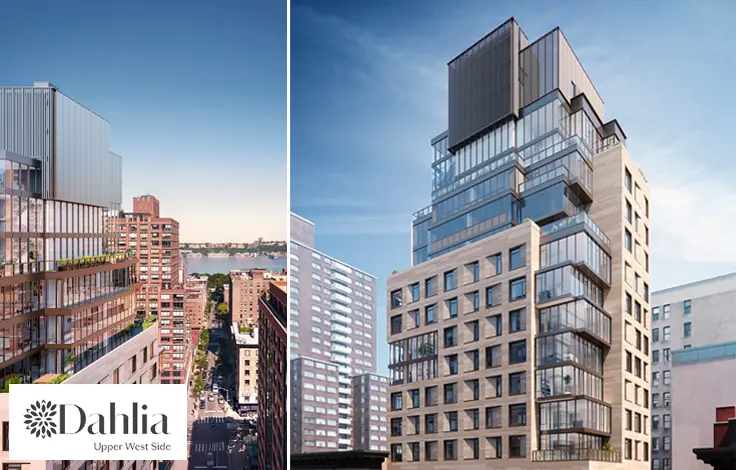
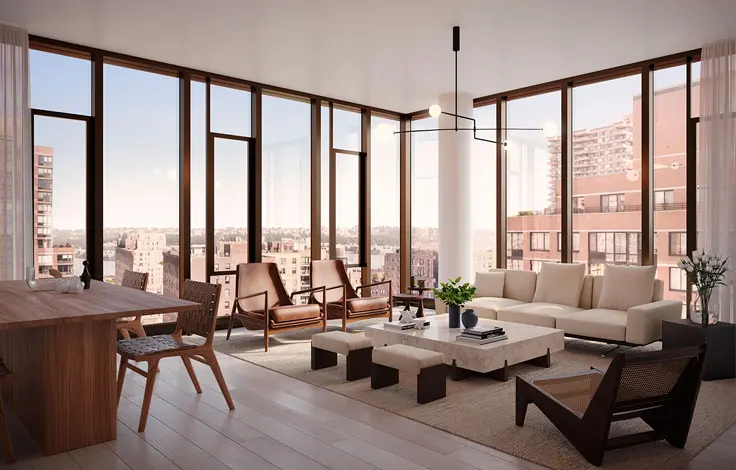
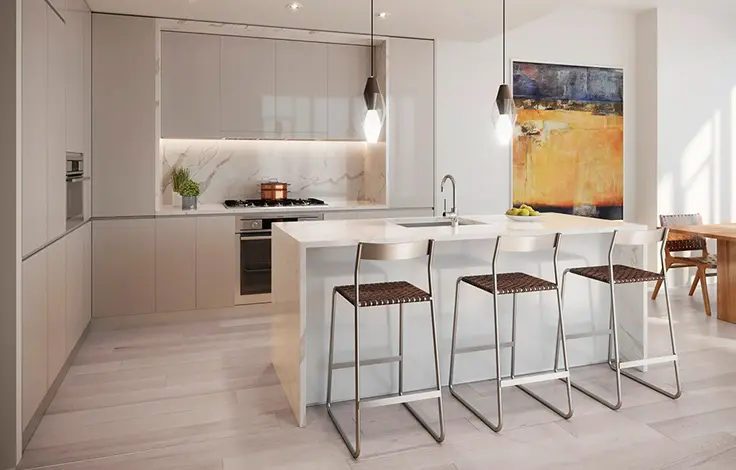
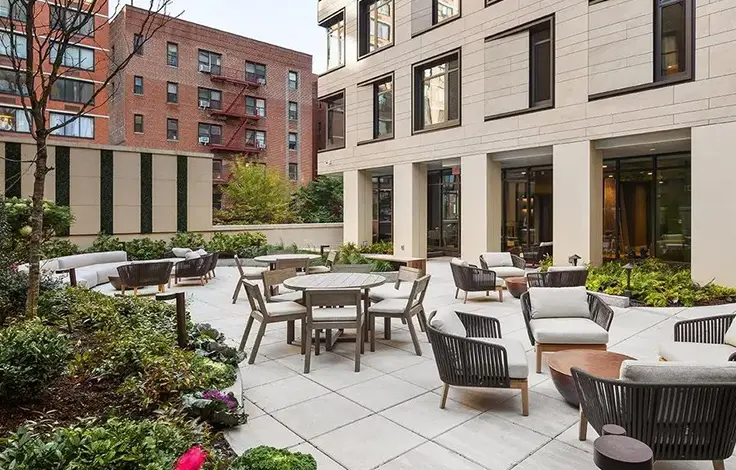
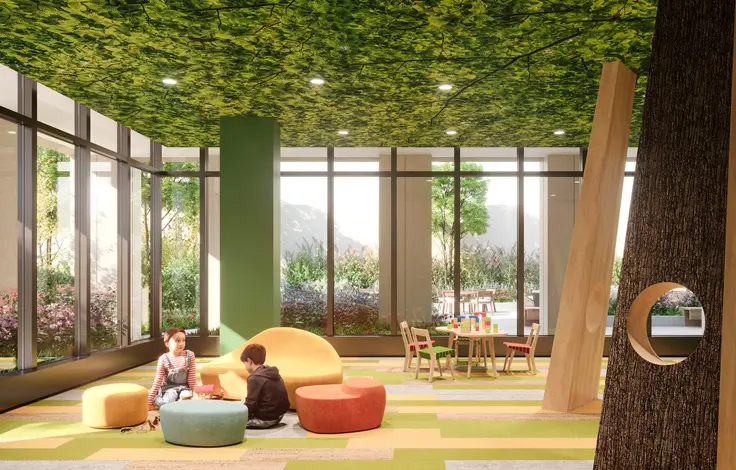
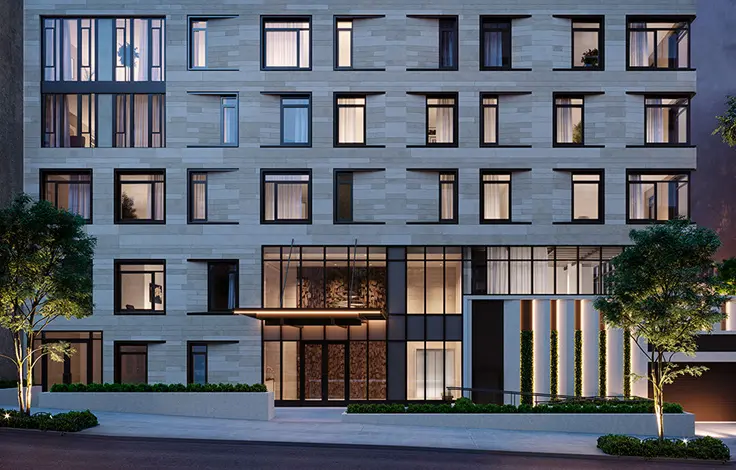
 6sqft delivers the latest on real estate, architecture, and design, straight from New York City.
6sqft delivers the latest on real estate, architecture, and design, straight from New York City.
